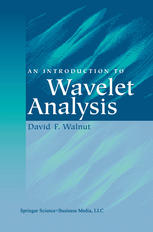

Most ebook files are in PDF format, so you can easily read them using various software such as Foxit Reader or directly on the Google Chrome browser.
Some ebook files are released by publishers in other formats such as .awz, .mobi, .epub, .fb2, etc. You may need to install specific software to read these formats on mobile/PC, such as Calibre.
Please read the tutorial at this link: https://ebookbell.com/faq
We offer FREE conversion to the popular formats you request; however, this may take some time. Therefore, right after payment, please email us, and we will try to provide the service as quickly as possible.
For some exceptional file formats or broken links (if any), please refrain from opening any disputes. Instead, email us first, and we will try to assist within a maximum of 6 hours.
EbookBell Team

4.8
94 reviewsAn Introduction to Wavelet Analysis provides a comprehensive presentation of the conceptual basis of wavelet analysis, including the construction and application of wavelet bases. The book develops the basic theory of wavelet bases and transforms without assuming any knowledge of Lebesgue integration or the theory of abstract Hilbert spaces. The book motivates the central ideas of wavelet theory by offering a detailed exposition of the Haar series, and then shows how a more abstract approach allows us to generalize and improve upon the Haar series. Once these ideas have been established and explored, variations and extensions of Haar construction are presented. The mathematical pre-requisites for the book are a course in advanced calculus, familiarity with the language of formal mathematical proofs, and basic linear algebra concepts. Features: *Rigorous proofs with consistent assumptions on the mathematical background of the reader; does not assume familiarity with Hilbert spaces or Lebesgue measure * Complete background material on (Fourier Analysis topics) Fourier Analysis * Wavelets are presented first on the continuous domain and later restricted to the discrete domain, for improved motivation and understanding of discrete wavelet transforms and applications. * Special appendix, "Excursions in Wavelet Theory " provides a guide to current literature on the topic * Over 170 exercises guide the reader through the text. The book is an ideal text/reference for a broad audience of advanced students and researchers in applied mathematics, electrical engineering, computational science, and physical sciences. It is also suitable as a self-study reference guide for professionals. All readers will find